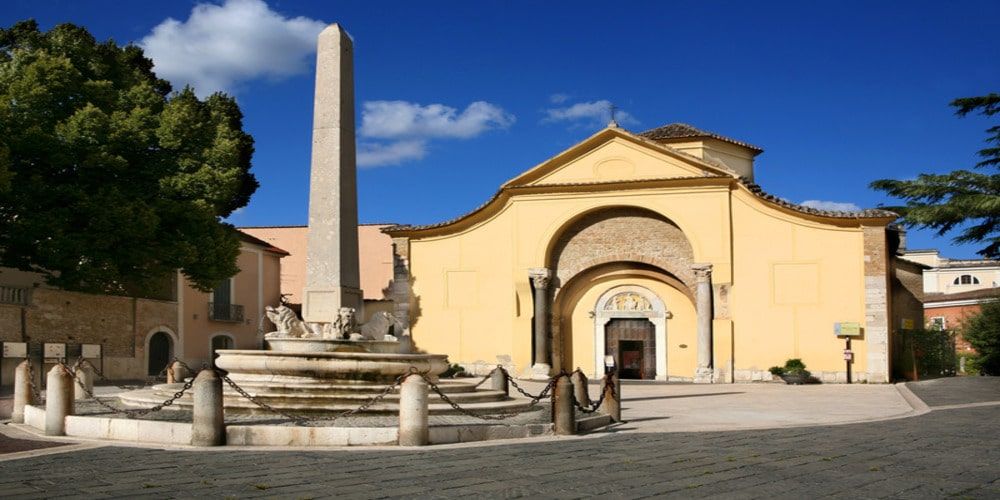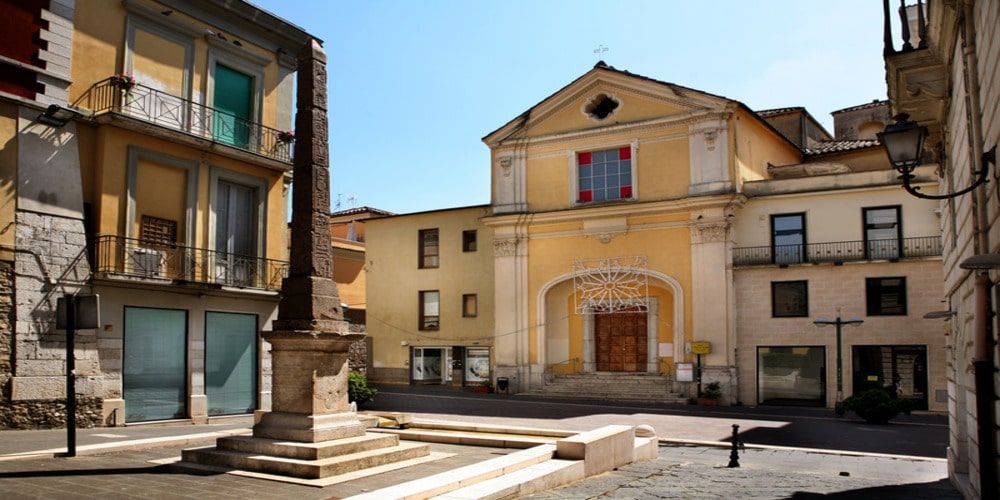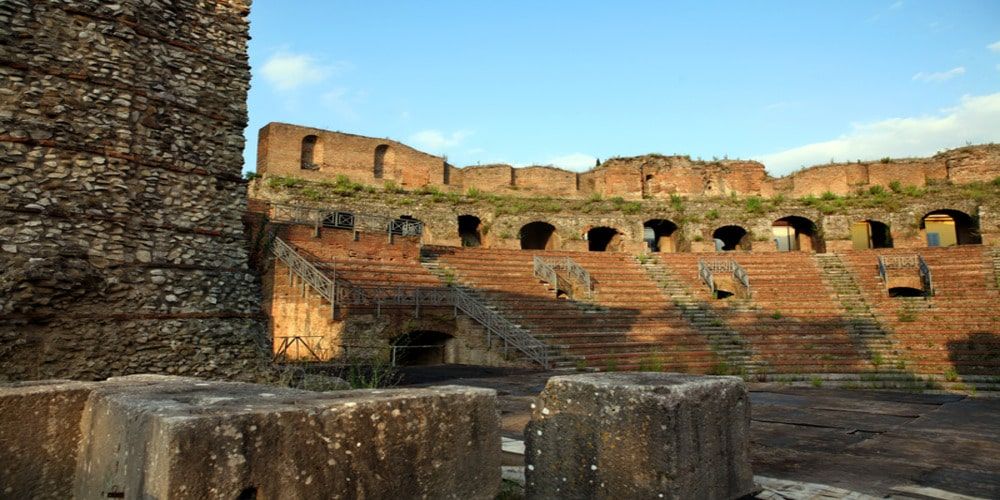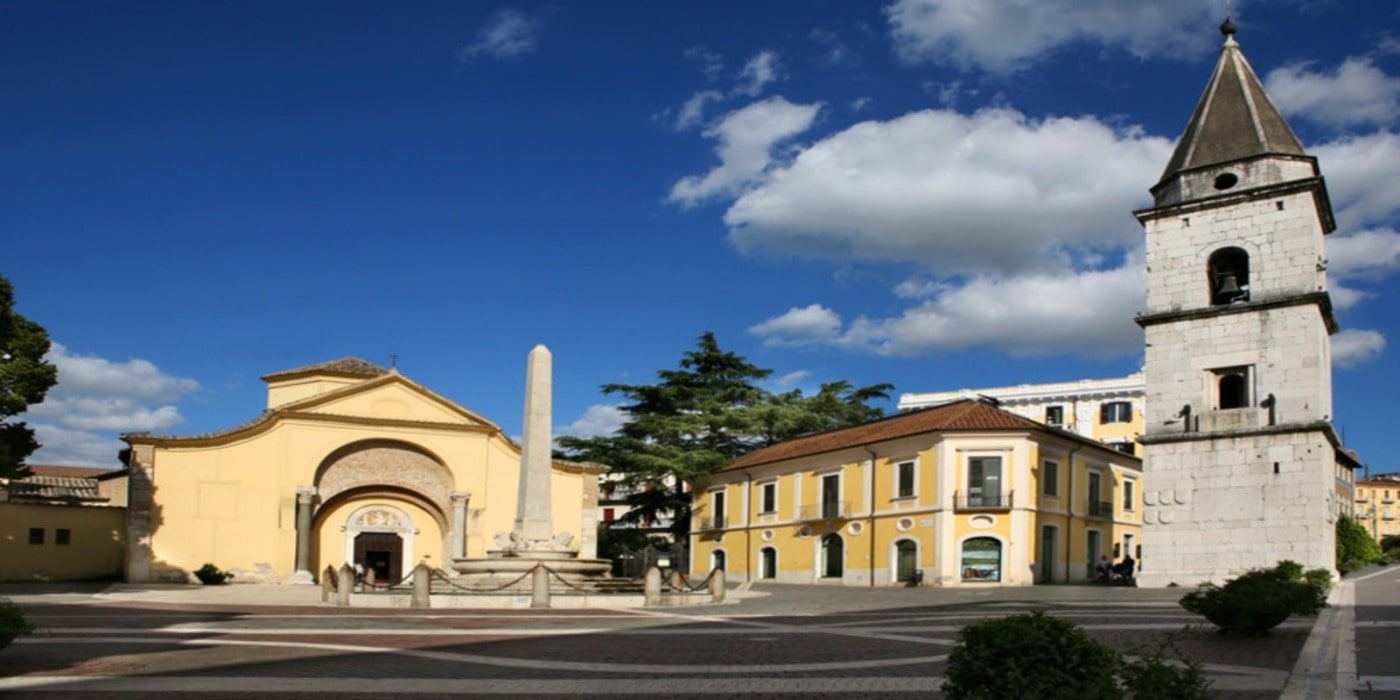Many people in Benevento don't know, or maybe easily forget it, but their amazing city shows lots of its ancient beauties just under their very noses, for free (or almost).
That's because the so-called City of Witches is a place full of Roman and Middle Age (and more) mindblowing sightseeings at zero cost, and as a sort of open-air museum, it can be everyday observed and admired – and perhaps because of that it doesn't receive deserved attention and care.
Come with us in our today mini-guide in the old centre of the smallest and less known of the Campania cities, just to help you, if you will visit it, to sharpen your eyes around.

Chiesa di Santa Sofia

Santa Sofia Church and fountain Benevento
Let's start our walk from Santa Sofi Church. It is a magnificent Early Middle Age art example, funded by Duke Arechi II in 758, and one of the pieces of evidence of Longobard domain in the city before its annexation to the Papal State. Benevento was in fact a Longobard Dukedom from 590 to 1077 and the building witnesses that in the heart of the old city.
Showing its perfectly preserved structure and clearly visible frescos on its walls, the church is today a fascinating location for weddings and ceremonies; it includes a bell tower and a fountain out front and a former monastery cloister at its back. Furthermore, in 2011, the place became a UNESCO World Heritage Site, together with other six sites across Italy – parts of a path called “Longobards in Italy, the places of power”.
Arco di Traiano

Trajan's Arch in Benevento
Keeping going on the boulevard, at the very halfway, you will be enchanted by the magnificent presence of the Arco di Traiano, the Trajan's Arch, maybe the most known symbol of the city, one of the best preserved exemple of Roman Age you can appreciate here. Built in 114 a.C., the Arch celebrated the Emperor's glories but above all introduced an important road connection between Rome and Apulia across the old via Appia.
You can visit it for free and you can see it very close up, being able to clearly observe the the richly carved sections at all sides, composed by low relief images of various topics - the story of the City, battles and victories by Trajan and celebrations for gods and symbolic representations.
Obelisco di Iside

Isis' obelisk on corso Garibaldi, Benevento
Just some steps ahead you can meet an extremely rare Neo-egyptian art sample, that is one of the obelisks dedicated to the Egyptian goddess Isis.
From the Age of Flavian dynasty domain, thanks to the Emperor Domitian, the cult of Isis spread in Benevento, since the goddess protected sailors and propitiated sea trade in Campania. In 88-89 a.D. three sanctuaries were erected to ingratiate Isis, but unfortunately they haven't survive; just some statues and sculptures remained, now collected and showed in the Museo del Sannio, and so did the aforementioned obelisk, but it was placed in piazza Papiniano in 1872.
Three metres tall, the sculpture was realised in red granite and bears hieroglyphs on its four faces, describing either Goddess and Emperor worshipping; the name of the author, Lucilio Lupo (or Rufio), is also visible on it. Another oblisk, very similar in shape but damaged, has been stored in Museo del Sannio, too.
Teatro Romano

Inner space of Roman Theater, Benevento
A lovely walk in the sun bring us in the Triggio district, which houses the ruins of the Longobard Walls, shield of the city in ancient times; you can traverse them and approach to the fabulous Teatro Romano, that is the Roman Theater.
The Benevento Roman Theater is one of the widest ancient theathers in Italy, so similar in its structure to the Teatro Marcello in Rome. It was raised between the end of the I and the beginning of the II century, during Emperor Trajan's domain, boasts about 90 mt in diameter, to host more than 1000 spectators. Probably built of white marble and composed by three architectural orders – Tuscan, Ionian and Corinthian – has the most of is original shape still untouched and viewable.
Today, many events and performances take place here, especially during summertime – for example, the literary prize Premio Strega. You can visit this wonderful place and get lost in its timeless beauty for just 2 Euros.
Hortus Conclusus
Let's to the last stop of the tour, the Hortus Conclusus, an example of more recent architecture.
This lovely and peaceful garden, further famous icon of Benevento, was born in 1992, a couple of steps far from Santa Sofia in Corso Garibaldi, to introduce a group of contemporary art jewels in a green context. Inspired by the ancient concept of the enclosed gardens in monasteries (literally hortus conclusus in Latin), this tiny green area houses some works by Mimmo Paladino, a famous local Transavantgarde artist, who pictured it as a location for silence and mediation, where art meets nature.
Crowded by Longobard-like walls, the Hortus includes columns, chapters, scattered human and animal bronze figures and many battlefield symbols all over, like the famous bronze horse, a close bond with our cultural roots. A contemplative atmosphere is supported by the surrounding trees, bushes and flowers and the flowing water of a fountain.
Like the Theater, the garden turns into a magic location for events and concerts in the summertime and the access is for free.
Just one last tip if you want to travel through our path again: don't underrate the humidity factor and don't forget your hat!
About the author
Written on 28/01/2023




Denise Penna
Benevento offers many historical wonders just before your gaze; discover them trough a walk along the centuries.